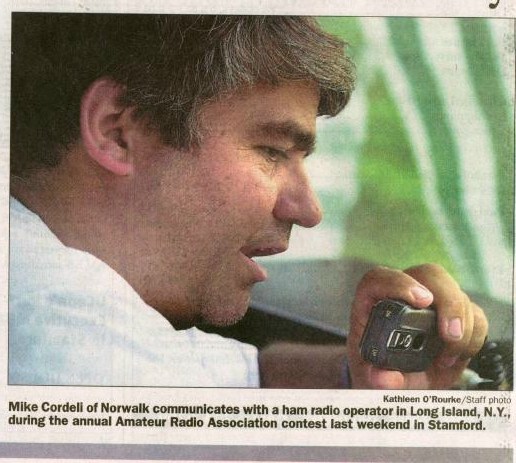The contest invites amateur radio operators in the Western Hemisphere to participate. The goal is to simulate emergency operating conditions by contacting as many areas of the United States, Canada and South America as possible. A separate contest is held for European members. Each contact earns the team one point.
The Stamford Amateur Radio Association likely will not win the contest because the club lacks the manpower to operate the radio, which was assembled using a portable antenna with a range of thousands of miles, member Fred Cunningham said.
But the contest has another purpose -- to teach the public about ham radios, said Cunningham, a club member for 10 years. Operators, who must be licensed by the FCC, use frequencies to contact parts of the world.
Some frequencies work better locally; others are used to contact ham operators in foreign countries, ships at sea and even astronauts in space.
Unlike frequencies used by radio and television, which are effective within 40 or 50 miles, the short-waves of ham radio "bounce" off the ionosphere from the transmitter to the receiver's antenna.
While most ham operators use voice contacts, some enhance reliability by using Morse code. Morse code signals often get through when voice transmissions cannot.
Cunningham said that for decades ham radio was a popular hobby for people interested in conversing with people in other parts of the world. In recent years, ham radio has been eclipsed by the Internet.
The most important use of ham radio, he said, became clear Sept. 11. When telephone and cellular service was knocked out by the terrorist attacks, ham radios were operating. Volunteer ham radio operators from all over the country, including the Stamford group, went to New York City to help coordinate rescue efforts by using ham radio.
Since the attacks, there has been a slight resurgence in interest in ham radios as a hobby, Cunningham said.
Jake Stone, 15, of Stamford, is days from joining the ranks of the more 675,000 amateur radio operators in the United States.
Stone, a sophomore at Westhill High School, said he became interested in ham radios while trying to earn a merit badge for his Boy Scouts troop. In the process, he passed the operator's test and expects to get his license this week.
"I find it interesting to talk to people all around the world," Stone said. "But it is also a matter of civil preparedness. I'd like to be able to help in times of emergency."
